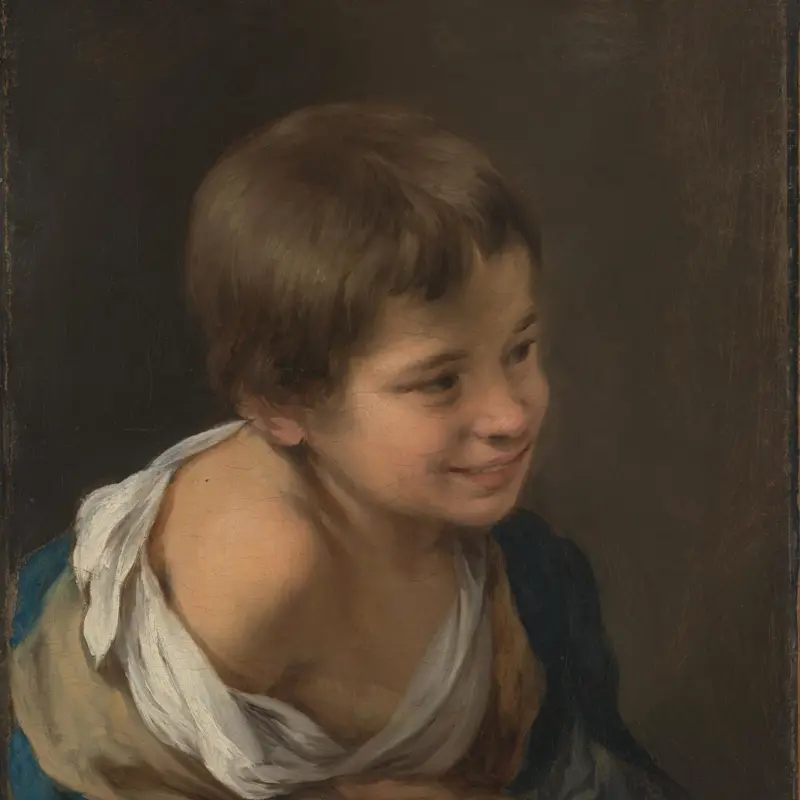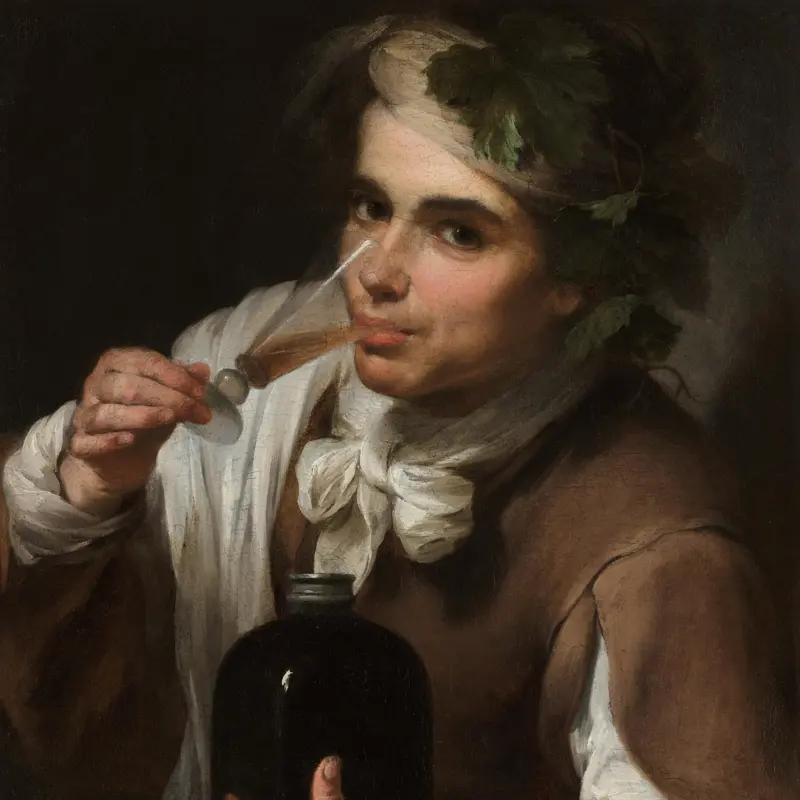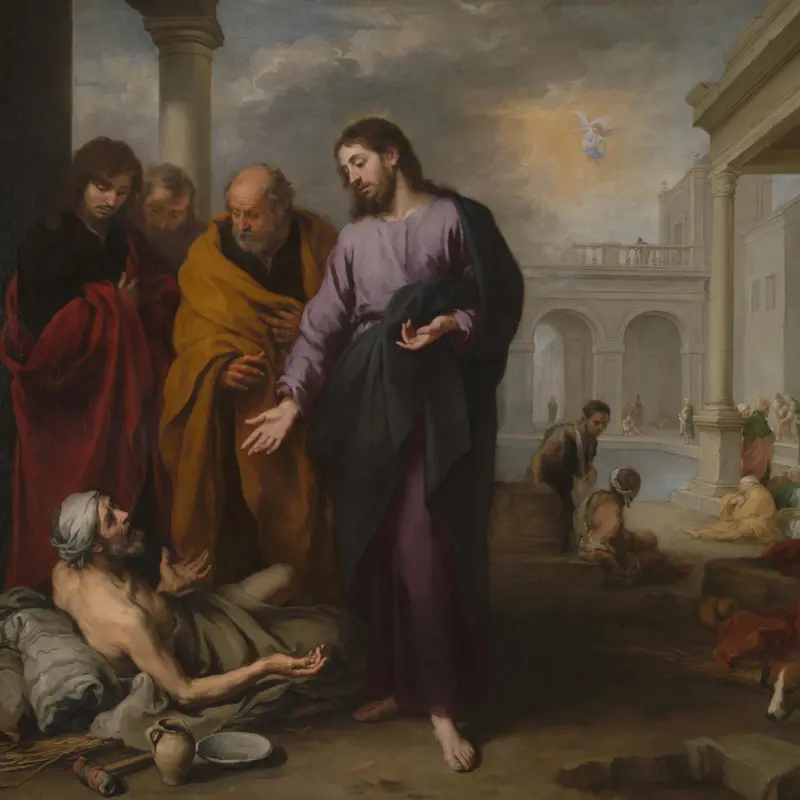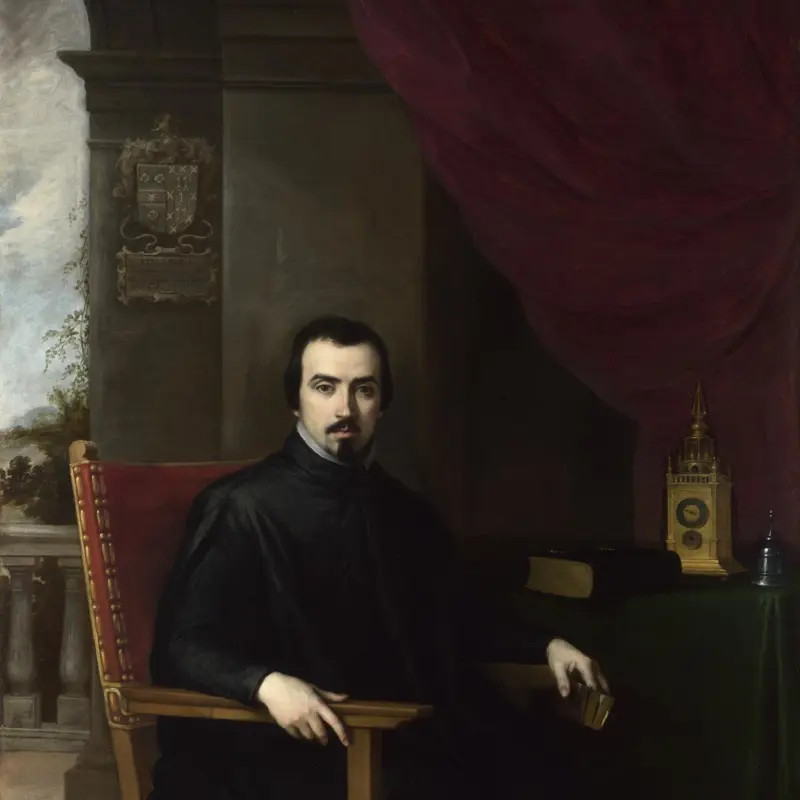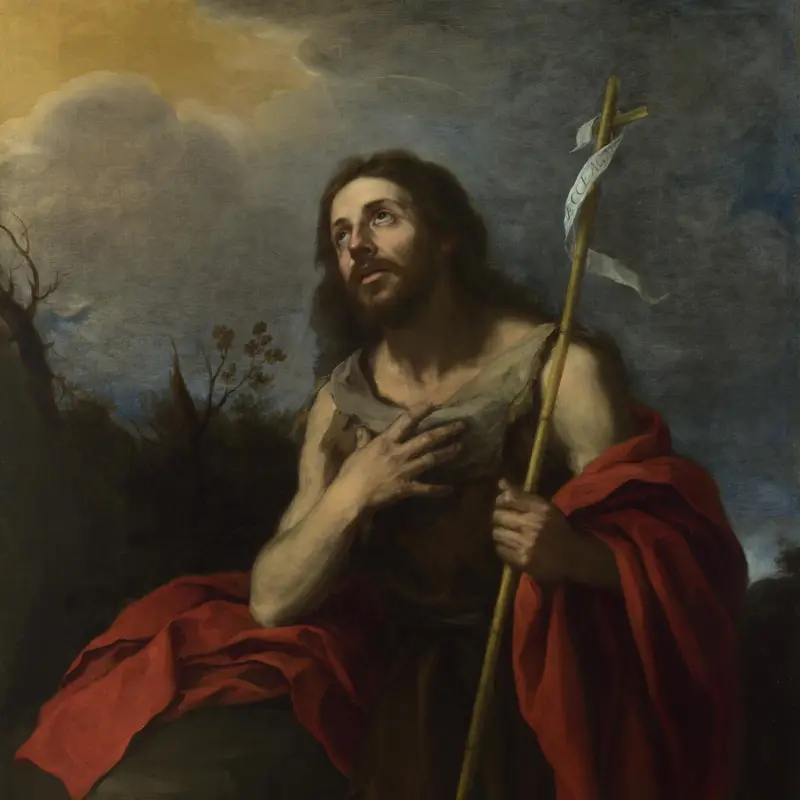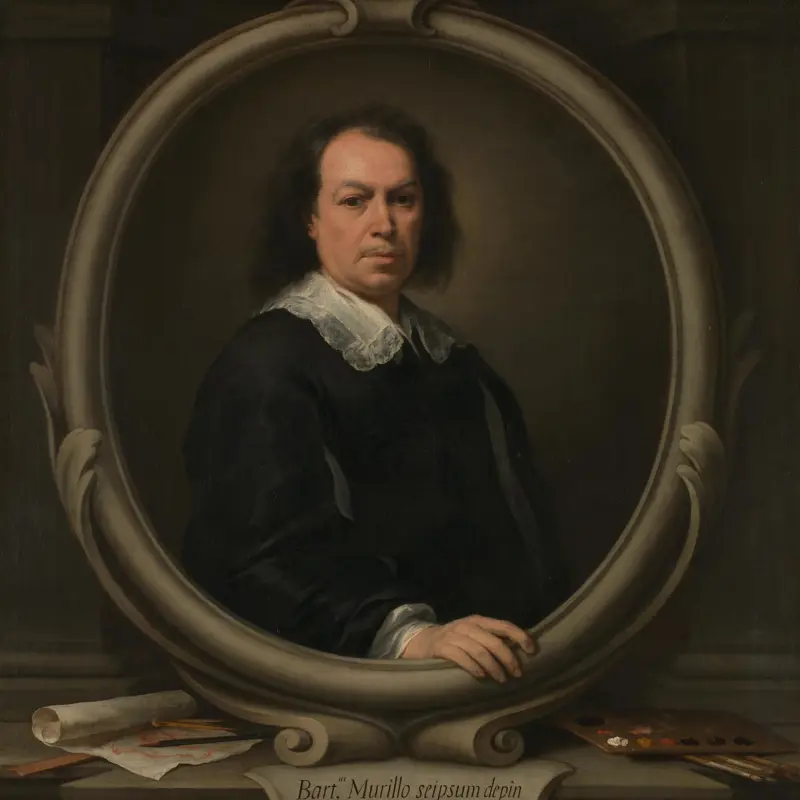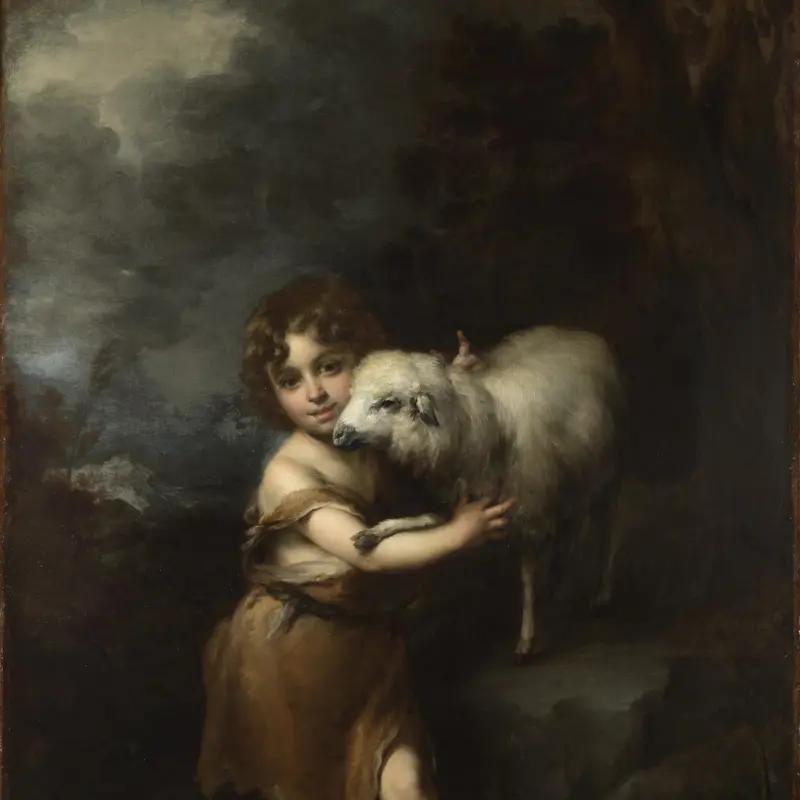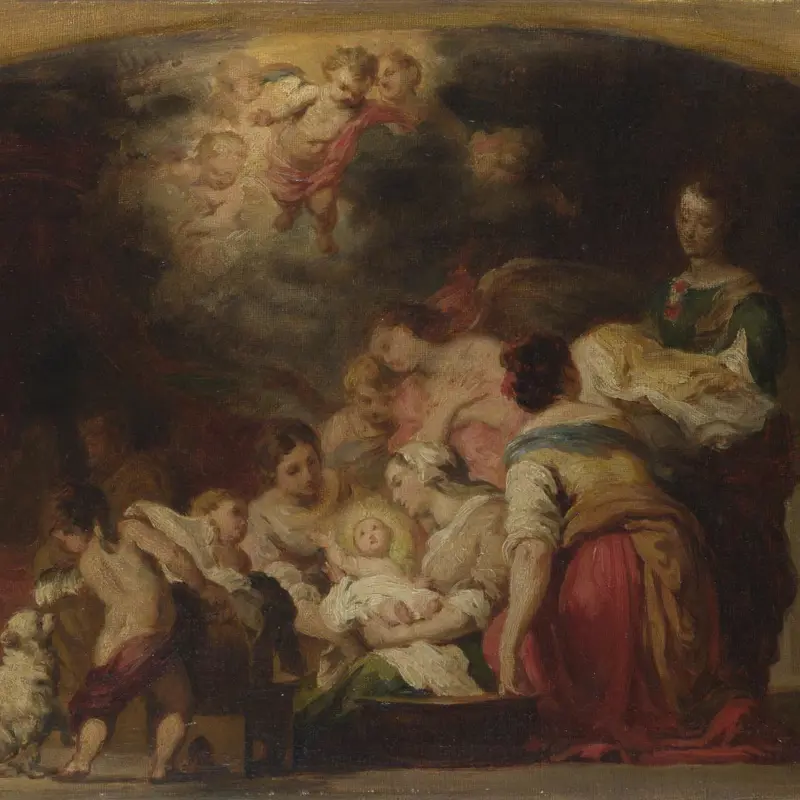Bartolomé Esteban Murillo and studio, 'The Immaculate Conception of the Virgin', 17th century
About the work
Overview
Surrounded by angels, a graceful and ethereal Virgin Mary crosses her hands over her breast and gazes heavenwards. She wears a white garment and a swirling blue cloak.
The scene is bathed in a mellow light, and the Virgin is surrounded by a golden haze of clouds into which angels seem to dissolve. The tip of a crescent moon is visible beneath her feet, a symbol associated with images of the Immaculate Conception (the belief that the Virgin was conceived without sin).
Once thought to be by an imitator of Murillo, cleaning work carried out in 1980 revealed a picture of higher quality and the possible participation of the master himself. The lower angels, with expressive hands, twisted bodies and energetic movement, are among the best parts; they are more likely to be by Murillo.
Key facts
Details
- Full title
- The Immaculate Conception of the Virgin
- Artist
- Bartolomé Esteban Murillo and studio
- Artist dates
- 1617 - 1682
- Date made
- 17th century
- Medium and support
- Oil on canvas
- Dimensions
- 211 × 126 cm
- Acquisition credit
- Bequeathed by Joseph Trueman Mills, 1924
- Inventory number
- NG3910
- Location
- Not on display
- Collection
- Main Collection
Provenance
Additional information
Text extracted from the ‘Provenance’ section of the catalogue entry in Neil MacLaren, revised by Allan Braham, ‘National Gallery Catalogues: The Spanish School’, London 1988; for further information, see the full catalogue entry.
Bibliography
-
1795A. Palomino, El museo pictorico, y escala óptica, 3 vols, Madrid 1795
-
1838Musée du Louvre, Notice des tableaux de la galerie espagnole exposés dans les salles du Musée royal au Louvre, Paris 1838
-
1848W. Stirling-Maxwell, Annals of the Artists of Spain, London 1848
-
1853Christie, Manson & Woods, Catalogue of the First Portion of the Pictures Forming the Celebrated Spanish Gallery of His Majesty the Late King Louis Philippe, London, 6 May 1853 - 7 May 1853
-
1914E. Tormo, 'La Inmaculada y el arte español', Boletín de la Sociedad Española de Excursiones, XXII, 1914, pp. 108-32, 176-208
-
1952Maclaren, Neil, National Gallery Catalogues: The Spanish School, London 1952
-
1955I. Elizalde, En torno a las Inmaculadas de Murillo, Madrid 1955
-
1970N. MacLaren and A. Braham, The Spanish School, 2nd edn, London 1970
-
1972I.H. Lipschutz, Spanish Painting and the French Romantics, Cambridge MA 1972
-
1978J.A. Gaya Nuño, L'opera completa di Murillo, Milan 1978
-
1980National Gallery, 'Pictures Cleaned and Restored in the Conservation Department of the National Gallery, March 1980 - December 1980', National Gallery Technical Bulletin, V, 1981
-
1981J. Baticle and C. Marinas, Notes et documents des Musées de France. La Galerie Espagnole de Louis-Philippe au Louvre, 1838-1848, Paris 1981
-
1981D.A. Íñiguez, Murillo. Su vida, su arte, su obra, Madrid 1981
-
1981A. Braham, El Greco to Goya: The Taste for Spanish Paintings in Britain and Ireland (exh. cat. The National Gallery, 16 September - 9 November 1981), London 1981
-
1988Maclaren, Neil, revised by Allan Braham, National Gallery Catalogues: The Spanish School, 2nd edn (revised), London 1988
-
2001
C. Baker and T. Henry, The National Gallery: Complete Illustrated Catalogue, London 2001
About this record
If you know more about this work or have spotted an error, please contact us. Please note that exhibition histories are listed from 2009 onwards. Bibliographies may not be complete; more comprehensive information is available in the National Gallery Library.

